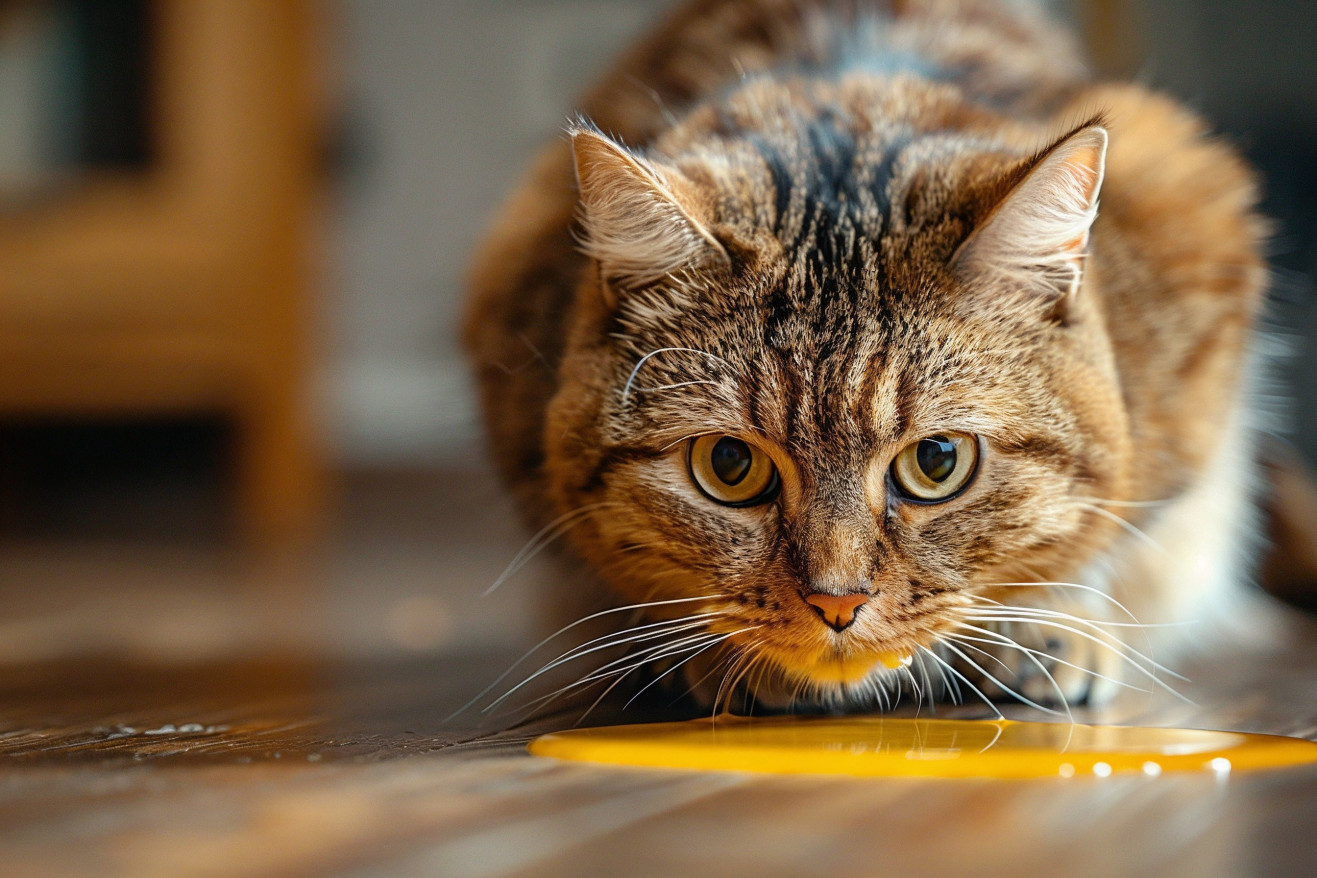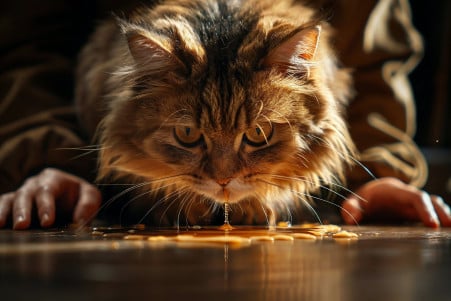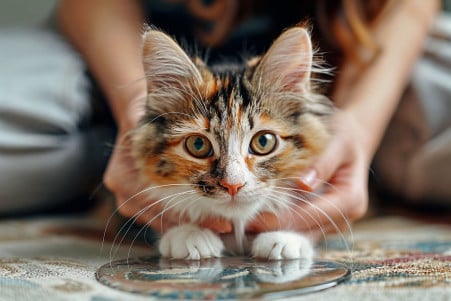Cat Yellow Vomit: Causes and When to See the Vet
22 May 2024 • Updated 20 May 2024

If you’ve ever seen your cat throw up yellow liquid, you’ve probably wondered what it means. When cats vomit yellow bile, it means that their stomach is empty and the bile from the liver and other digestive juices are being vomited up - and it’s nothing to worry about unless it’s happening regularly.
While the occasional yellow vomit is normal, if your cat is vomiting regularly, it could be a sign of an underlying issue that needs to be addressed by a vet. In this article, we’ll explore the latest research from veterinarians to help you understand the causes, symptoms, and treatments of cats vomiting yellow bile. By learning from scientific research, you’ll be able to tell the difference between harmless hairballs and a more serious issue that requires a trip to the vet.
What are the causes of yellow vomit in cats?
Causes of Yellow Vomit in Cats
According to PetCareRx, an empty stomach can cause bile and stomach acids to build up, leading to irritation and vomiting. Dietary issues, such as eating something that is hard to digest or a food intolerance, can also cause yellow vomit. Vet Help Direct explains that anything that disrupts the normal passage of food through the digestive system can cause nausea and vomiting of bile.
Health problems are another common cause. According to PetMD, inflammatory bowel disease, pancreatitis, diabetes, and kidney disease can all cause chronic yellow vomiting. Meanwhile, the same source explains that hairballs, intestinal obstructions, and parasitic infections can cause cats to vomit bile.
It's important to figure out the cause because, as PetCareRx points out, different causes require different treatments, and while some causes, like gallstones, liver disease, and dietary issues, can be treated with medication, others, like liver disease, may require surgery.
When to See a Vet
While the occasional yellow vomit is normal, according to PetMD, if your cat is vomiting frequently or consistently, it could be a sign of a more serious issue. Other symptoms like diarrhea, lethargy, weight loss, or loss of appetite should be addressed by a vet immediately, according to VCA Animal Hospitals. Vomit that includes blood, is filled with undigested food, or has a particularly bad smell should also be looked at by a vet, according to Best Friends Animal Society.
Cats with pre-existing conditions or cats that can't hold down food should be seen by a vet as soon as possible, according to PetMD. It's important to see a vet to rule out more serious issues and to get the right kind of care.
Natural Remedies and Diet Changes for Mild Cases
If your cat is experiencing occasional, mild vomiting, you can help them feel better by fasting them for 12-24 hours to rest their stomach, per Catster. Feeding your cat small, frequent meals of a bland diet, like boiled chicken and rice, can also be easier on their digestive system and help reduce vomiting, according to VCA Animal Hospitals.
Ginger tea or small amounts of petroleum jelly or mineral oil can help your cat pass hairballs and calm their digestive tract, Catster says. In addition, switching to a high-quality, easily digestible cat food with limited ingredients can help reduce allergic reactions and the amount of work your cat’s stomach has to do, according to Pawlicy Advisor. Adding fiber to your cat’s diet can also help prevent hairballs and support their digestive health, per Catster.
While these natural remedies can help you manage occasional, mild vomiting, if your cat is vomiting frequently or their vomiting is severe, you should see your vet to make sure there isn’t an underlying medical issue that needs to be treated.
Veterinary Diagnosis and Treatment Options
If home treatments don’t work or if your cat’s symptoms continue, a trip to the vet is necessary to determine the cause, according to Purina. To diagnose the cause of your cat’s vomiting, your vet may run a variety of tests, including blood tests, fecal tests, X-rays, ultrasounds, and biopsies, depending on the suspected cause, according to VCA Animal Hospitals.
Depending on the cause, treatment options can include everything from dietary changes and medications to surgery for more serious issues like obstructions or cancer, according to Purina. In addition, your vet may recommend fluid therapy and anti-nausea medications to help your cat rehydrate and stop vomiting, says VCA Animal Hospitals.
After treatment, it’s important to keep a close eye on your cat and make sure to bring them in for any recommended follow-up appointments to ensure they recover and to catch any potential issues early, says Carolina Veterinary Specialists. With the right care from a vet, many cases of chronic yellow vomiting can be managed or resolved.
Prevention and Keeping Your Cat's Digestive System Healthy
Feeding your cat on a regular schedule and avoiding long gaps between meals can help prevent bile buildup and vomiting, says Catster. Meanwhile, making sure your cat has access to fresh, clean water at all times is important for preventing dehydration and maintaining a healthy digestive system, according to Vets-Now.
Regular grooming and brushing can help reduce hairball formation and the risk of intestinal blockages, according to ASPCA Pet Insurance. In addition, keeping your cat's living environment stress-free and providing mental stimulation can help support their overall health and digestive well-being.
Finally, regular vet visits and preventive care can help catch and treat potential problems early, says Purina. By being proactive about supporting your cat's digestive health, you can help reduce the likelihood of yellow vomit and support your cat's overall health.
Conclusion: How to Deal With Cat Yellow Vomit
While yellow vomit is common and often not a cause for concern, if it's happening regularly or is severe, it's important to make sure you get your cat the help they need. Paying attention to how often it's happening and how long it lasts, as well as any other symptoms, will help you figure out what to do next.
If your cat is vomiting yellow regularly, it's important to see a vet to make sure there isn't an underlying condition that needs to be treated. You can also help your cat avoid yellow vomit by making sure they're eating a healthy diet and living a healthy lifestyle. With the right care, many cases of yellow vomit in cats can be managed or treated.


